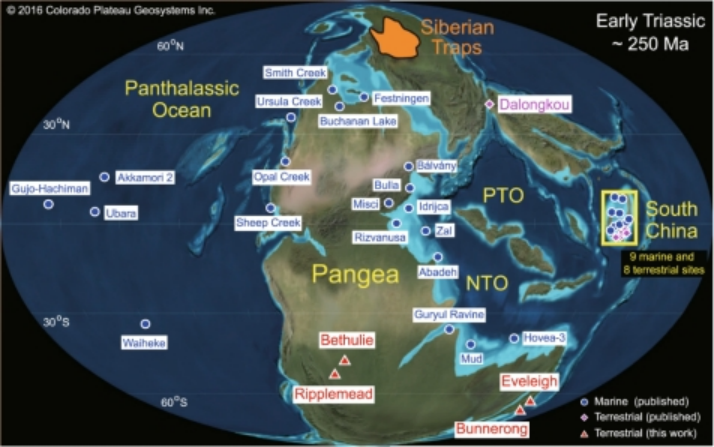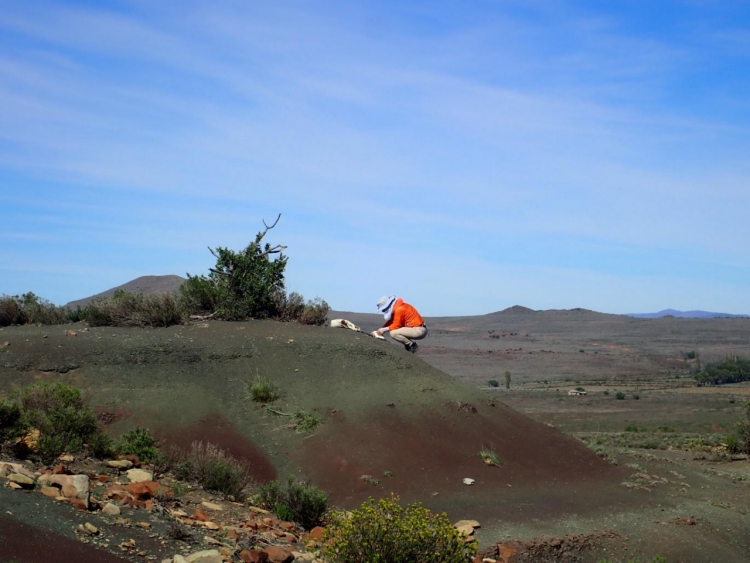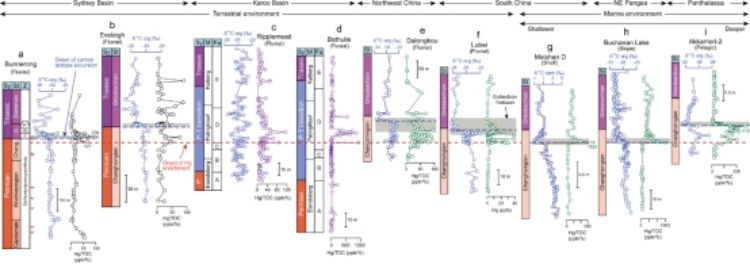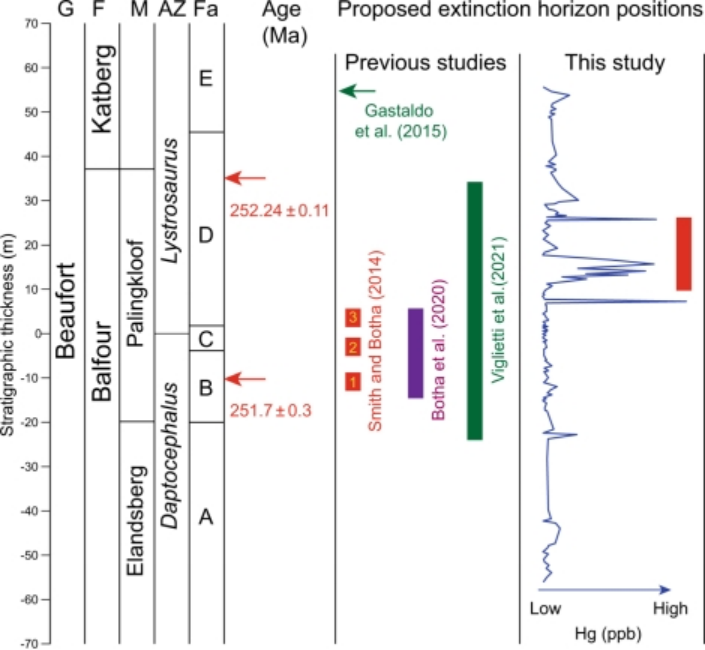SHEN Jun, researcher from the State Key Laboratory of Geological Processes and Mineral Resources, and scholars from the US, South Africa, and the UK published “Mercury evidence from southern Pangea Terrestrial sections for end-Permian global volcanic effects” in Nature Communications. SHEN is the first and corresponding author.
The latest Permian mass extinction (LPME) was triggered by magmatism of the Siberian Traps Large Igneous Province (STLIP), which left an extensive record of sedimentary Hg anomalies at Northern Hemisphere and tropical sites. Here, we present Hg records from terrestrial sites in southern Pangea, nearly antipodal to contemporaneous STLIP activity, providing insights into the global distribution of volcanogenic Hg during this event and its environmental processing. These profiles (two from Karoo Basin, South Africa; two from Sydney Basin, Australia) exhibit significant Hg enrichments within the uppermost Permian extinction interval as well as positiveΔ199Hg excursions (to ~0.3‰), providing evidence of long-distance atmospheric transfer of volcanogenic Hg. These results demonstrate the far-reaching effects of the Siberian Traps as well as refine stratigraphic placement of the LPME interval in the Karoo Basin at a temporal resolution of ~105 years based on global isochronism of volcanogenic Hg anomalies.

Fig. 1 Global paleogeography of the Early Triassic (~250 Ma).

Fig.2 SHEN in Karoo Basin, South Africa

Fig.3 Mass-independent fractionation(Δ199Hg, ‰)

Fig.4 Comparison of previously proposed placements of the tetrapod
extinction interval in the Karoo Basin with that of the present study.
(Edited and translated from the Chinese version)